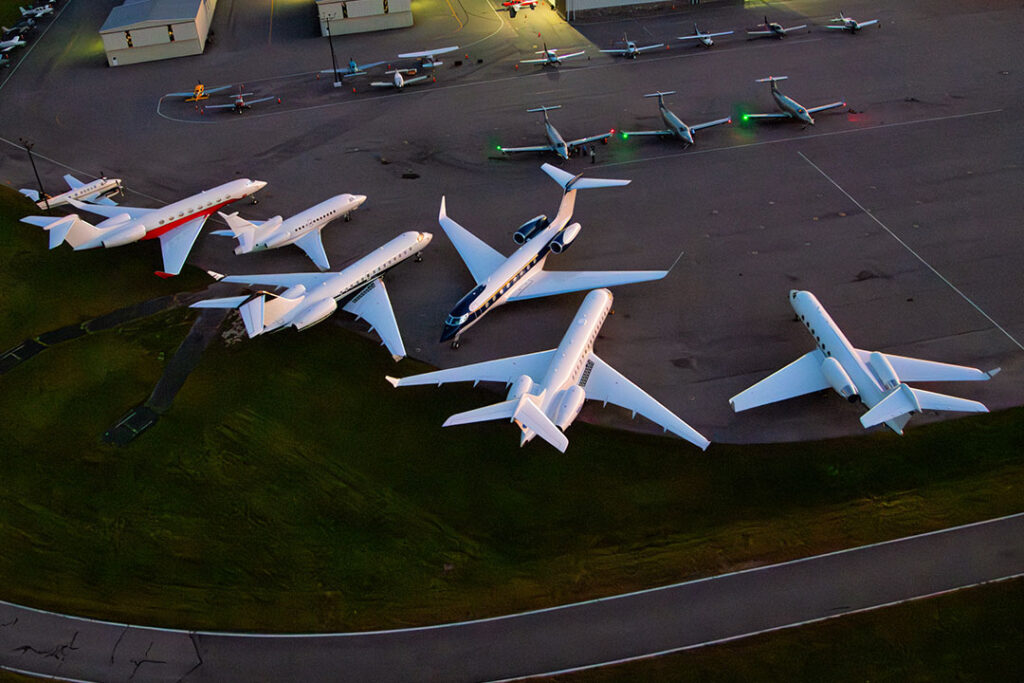After years of steady expansion, the private aviation industry experienced unprecedented private jet flight growth in 2024. Charter companies, fractional ownership providers, and on-demand jet services reported record numbers of flight hours, aircraft utilization, and new customer acquisitions. While the pandemic initially catalyzed this shift, the 2024 upswing reflected a longer-term transformation in how individuals and corporations approached air travel.
Surging Demand Driven by Flexibility and Convenience
The hallmark of private aviation—convenience—proved to be more valuable than ever. In a time when commercial airlines faced labor shortages, route cuts, and congested terminals, travelers turned to private aviation to save time and avoid hassle. Executives, high-net-worth individuals (HNWIs), and affluent leisure travelers increasingly preferred to skip crowded airports in favor of direct access, on-demand scheduling, and personalized service.
According to industry data, major providers like NetJets, Flexjet, and Wheels Up all experienced sharp rises in operations. In the first quarter of 2024, some companies recorded double-digit increases in flight activity year-over-year. Flexjet reported a 15% uptick in North American flight hours, while others added new aircraft to meet growing demand.
Post-Pandemic Behavior Shift Remained Influential
Many of the habits formed during the COVID-19 pandemic persisted through 2024. Travelers who were introduced to private jets during lockdowns remained in the ecosystem, citing improved service, security, and efficiency. Additionally, a younger demographic of private flyers—entrepreneurs, tech founders, and Gen Z professionals—reshaped the traditional private jet clientele profile.
Private aviation apps and online booking platforms also made market entry easier. The rise of digital-first operators lowered barriers by enabling users to book flights instantly, compare rates, and join jet card programs tailored to specific usage needs.
Fleet Expansion and Modernization

Top view of a Citation X (business jet) over cloud layers
To accommodate rising demand, providers not only flew more frequently but also invested in newer, more fuel-efficient aircraft. Popular models like the Embraer Praetor 600, Gulfstream G500, and Bombardier Challenger 3500 were added to fleets at a rapid pace. Some operators placed bulk orders to prepare for continued growth beyond 2024.
Fleet modernization also signaled a commitment to sustainability. Aircraft equipped with advanced avionics, aerodynamic efficiencies, and compatibility with sustainable aviation fuel (SAF) supported the industry’s efforts to reduce its environmental footprint while maintaining luxury standards.
Corporate Travel Rebounded and Amplified Growth
Another key contributor to private jet flight growth was the resurgence of corporate travel. With hybrid work arrangements stabilizing and global business resuming, executives returned to in-person meetings, site visits, and international conferences. Private jets offered a strategic advantage by reducing travel time and enabling multiple city stops in a single day—something commercial aviation could not match.
Private aviation also enabled corporations to enhance productivity. Onboard connectivity, quiet cabins, and tailored amenities created a mobile office environment, further justifying the investment in charter or fractional ownership solutions for business travel.
Market Consolidation and Strategic Partnerships
Amid this boom, industry consolidation and strategic partnerships shaped the competitive landscape. Wheels Up continued refining its partnership with Delta Air Lines, integrating services and offering members enhanced perks such as lounge access and SkyMiles rewards. NetJets expanded its collaboration with Textron Aviation to secure aircraft supply and ensure availability for a growing clientele.
These partnerships not only secured fleet capacity but also expanded brand reach and loyalty programs. Clients benefited from seamless service across platforms—whether flying internationally or connecting via major domestic hubs.
Operational Pressures Accompanied the Boom
Despite its upward trajectory, the industry faced several challenges. Crew shortages, maintenance delays, and limited infrastructure at smaller airports strained service levels. Some operators introduced waitlists or temporarily paused new member enrollments to maintain quality control.
Rising operational costs—particularly jet fuel, insurance, and pilot compensation—also led to higher hourly rates across many aircraft categories. Still, the overall value proposition of private aviation remained strong for clients prioritizing time and flexibility over cost.
The Outlook for 2025 and Beyond

A group of private jets parked on the tarmac
By the end of 2024, all signs pointed to continued expansion. Analysts projected sustained private jet usage well into 2025 and beyond, even as commercial airlines stabilized. The influx of new users, adoption of hybrid-electric propulsion technology, and widespread interest in sustainable aviation fuel were expected to shape the sector’s evolution.
Additionally, regional growth in Latin America, the Middle East, and Asia-Pacific opened new markets and routes. As airport infrastructure and regulatory frameworks matured, private jet operators became better positioned to serve a global clientele seeking speed, access, and exclusivity.
Charting the Course Forward
Private aviation did more than recover in 2024—it redefined luxury air travel. The surge in private jet flight growth reflected a broader shift in traveler priorities: control, comfort, and time-saving efficiency. As providers scale operations and innovate their fleets and service offerings, private air travel will continue to evolve from an elite perk into a strategic mobility solution for business and lifestyle alike.

